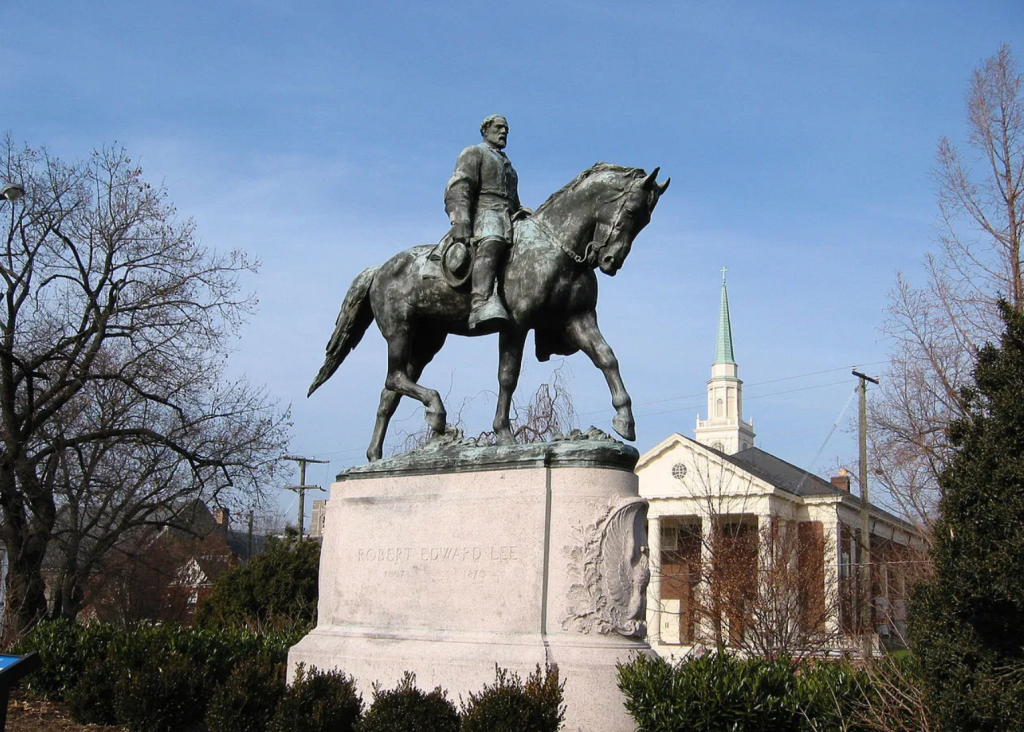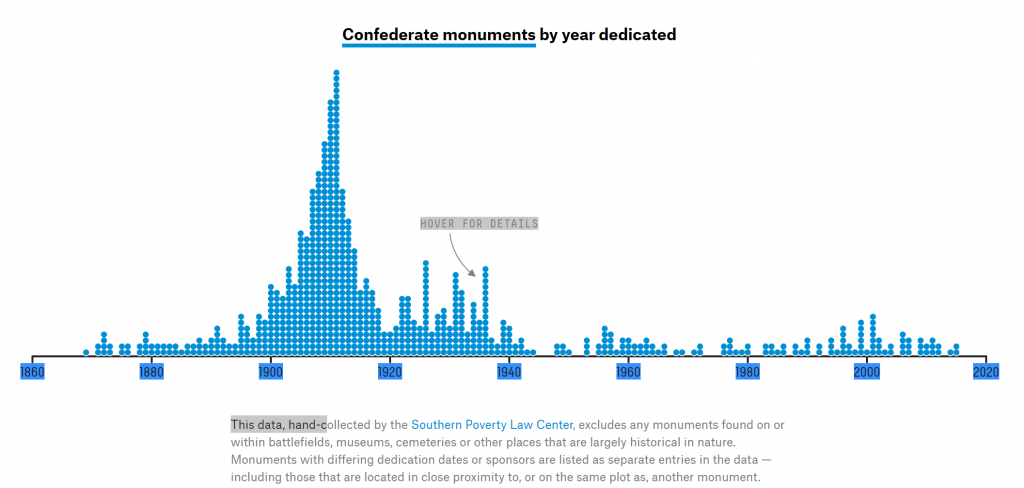
Confederate Statues Were Never Really About Preserving History
In recent weeks President Trump has railed against tearing down statues across the country — and has been particularly dogged in his defense of Confederate monuments. But his argument that they are benign symbols of America’s past is misleading. An overwhelming majority of Confederate memorials weren’t erected in the years directly following the Civil War. Instead, most were put up decades later. Nor were they built just to commemorate fallen generals and soldiers; they were installed as symbols of white supremacy during periods of U.S. history when Black Americans’ civil rights were aggressively under attack. In total, at least 830 such monuments were constructed across the U.S, according to the Southern Poverty Law Center, which maintains a comprehensive database of Confederate monuments and symbols.

The biggest spike in Confederate memorials came during the early 1900s, soon after Southern states enacted a number of sweeping laws to disenfranchise Black Americans and segregate society. During this period, more than 400 monuments were built as part of an organized strategy to reshape Civil War history. And this effort was largely spearheaded by the United Daughters of the Confederacy, who sponsored hundreds of statues, predominantly in the South in the early 20th century — and as recently as 2011.
“The UDC was very focused on the future,” said Karen Cox, a historian, University of North Carolina at Charlotte professor and author of numerous articles and books on Southern history and culture, including “Dixie’s Daughters: The United Daughters of the Confederacy and the Preservation of Confederate Culture.” “Their goal, in all the work that they did, was to prepare future generations of white Southerners to respect and defend the principles of the Confederacy.” It wasn’t just Confederate monuments, either. They also rejected any school textbook that said slavery was the central cause of the Civil War; they praised the Ku Klux Klan and gave speeches that distorted the cruelty of American slavery and defended slave owners.
From around 1920 to the early 1940s, there was a second wave of statue building. Jane Dailey, professor of American history at the University of Chicago, said this period of construction coincided with more Black Americans’ fighting for civil rights and pushing back against widespread lynchings in the South. “You have Black soldiers who have just fought for their country [in World War I] and fought to make the world safe for democracy, coming back to an America that’s determined to lynch them,” said Dailey. “[T]hose were very clearly white supremacist monuments and are designed to intimidate, not just memorialize.”
And a significant portion of those monuments were erected on courthouse grounds. According to Lecia Brooks of the Southern Poverty Law Center, placing these memorials on courthouse property, especially in the 1950s and ’60s, was meant to remind Black Americans of the struggle and subjugation they would face in their fight for civil rights and equal protection under the law.
Black Americans have long understood the symbolism of those monuments. “I know what this statue means,” said Brooks. “It’s a reminder to stay in my place.”
Not just statues were erected during this period, either. Following the landmark Brown versus Board of Education decision in 1954, which said maintaining racially segregated schools was unconstitutional, there was an uptick in the number of colleges and schools named after Confederate soldiers and generals: From 1954 to 1970, at least 45 were named after Confederates.







